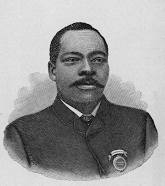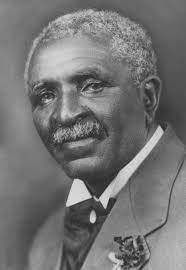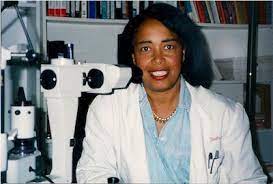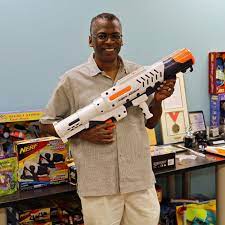Inventors To Know This Black History Month
- Cassandra Munoz

- Feb 9, 2023
- 5 min read
As we celebrate and honor Black History Month in February, we take a look at just a few of the greatest African-American inventors, past and present, who have improved the world we live in but who remain unrecognized. Read the accomplishments of these amazing inventors and the contributions they’ve had in science, technology, business and medicine.
Thomas L. Jennings (1791-1859) was the first African American person to receive a patent in the U.S., paving the way for future inventors of color to gain exclusive rights to their inventions. A tradesman and abolitionist, Thomas L. Jennings is a noteworthy figure.
Patent for dry-cleaning clothes. Scouring. The patent was awarded on March 3, 1821 (US Patent 3306x) for his discovery of a process called dry-scouring which was the forerunner of today’s modern dry-cleaning. [Reference]
Andrew Jackson Beard (1849–1921) was born into slavery in Alabama and gained his freedom when he was fifteen.
Beard invented the Automatic Railroad Car Coupler, commonly referred to as the "Jenny" coupler. The patent for his invention was issued on November 23, 1897 (see Registry entry on that date). Andrew Beard’s invention, which was improved in 1899, is the forerunner of today’s automatic coupler. Unfortunately, Beard’s life, after 1897, is a virtual mystery. [Reference]
Sarah Breedlove Walker (1867–1919), also known as Madame C. J. Walker, is probably the most famous African American woman inventor. The child of sharecroppers, Walker moved to St. Louis and joined her four brothers who were established barbers. During the 1890’s she began to suffer from a scalp ailment. She experimented with home remedies and began selling Madam Walker’s Wonderful Hair Grower, a scalp conditioning and healing formula. A talent for self-promotion, Walker built her enterprise and became “the first black woman millionaire in America” for her successful line of hair care products.
Walker relocated to Indianapolis and built a factory for her Walker Manufacturing Company. An advocate of black women’s economic independence, she opened training programs in the “Walker System” for her national network of licensed sales agents who earned healthy commissions. Ultimately, Walker employed 40,000 African American women and men in the US, Central America, and the Caribbean.
Granville T. Woods (1856–1910) was nicknamed "The Black Edison" for the number of inventions he built and patented including key contributions to the development of the telephone, railway cars, streetcar and more. Alexander Graham Bell's company purchased the rights to Woods' telegraphy patent enabling him to become a full-time inventor. His most notable invention was called the induction telegraph system. The system allowed moving trains to communicate which helped them avoid collisions, danger on tracks and helped dispatchers locate trains.
Woods held more than 50 patents, but his success led to lawsuits filed by Edison who sued Woods, claiming that he was the first inventor of the multiplex telegraph. Woods eventually won, and Edison tried to win Woods over by offering him a prominent position in the engineering department of Edison Electric Light Company in New York. Woods declined, preferring his independence.
George Washington Carver (1864-1943) was born into slavery and went on to be one of the most prominent scientists of his time. A botanist, inventor and scientist, Dr. Carver is best known for developing hundreds of products using peanuts, sweet potatoes and soybeans, such as plastics, paints, dyes and a kind of gasoline. He saw the need for practical farming methods, and in 1906 designed a Jessup Wagon, a laboratory on wheels, which he believed to be his most significant contribution toward educating farmers.
Dr. Carver’s desires for higher learning took him to Iowa, after being rejected at other schools based on race. He enrolled at Simpson College in Indianola, Iowa and later to Iowa State University, at Ames, where he later became the first African American on faculty. Booker T. Washington asked him to sign on at Tuskegee Institute and Carver moved to Alabama in 1896 to lead the African American college's agriculture department. For almost 50 years he remained at Tuskegee, teaching and pursuing his scientific studies. President Theodore Roosevelt admired his work and sought his advice on agricultural matters. When he died on January 5, 1943, Dr. Carver was widely recognized for his intelligence, humility, and inventiveness. President Franklin D. Roosevelt called him one of the world's most significant scientists. [Reference]
Patricia Bath (1942-2019) is the first African American female doctor to receive a medical patent and the first African American to complete a residency in ophthalmology, the study of the eye. Born in Harlem, Bath had to overcome sexism, racism and childhood poverty but was encouraged by her parents who believed in higher education. She persevered and received a medical degree from Howard University and completed her residency in ophthalmology in New York. During her ophthalmology fellowship she discovered African American patients were twice as likely as white patients to suffer blindness. She concluded this increase was caused by lack of access to ophthalmic care and developed Community Ophthalmology; a now-worldwide discipline which provides basic eye care information and materials. In 1986, she invented the Laserphaco Probe for cataract treatment, a cutting-edge device, used for cataract removal, and is still used today.
The founder of the American Institute for the Prevention of Blindness, Bath passionately fights for the prevention, treatment and cure for blindness. Few women in STEM embody the spirit of perseverance and inspiration like Dr. Patricia Bath.
Lonnie G. Johnson (b. October 6, 1949) is a former Air Force and NASA engineer who helped develop the stealth bomber program. With a masters degree from Tuskegee University, Johnson would spend time on his own projects including looking for an environmentally friendly heat pump that used water instead of Freon. One night in 1982, he decided to test his prototype. Lo and behold the “Super Soaker” was invented. The “Super Soaker” became a success with $200 million in sales in 1991, and went on to annually rank among the world's Top 20 best-selling toys.
Johnson has acquired dozens of patents since and has been developing the Johnson Thermoelectric Energy Converter (JTEC), an engine that converts heat directly into electricity, among other projects. He believes a successful version of the JTEC has the potential to make solar power competitive with coal, fulfilling the dream of efficient, renewable solar energy. “Lonnie Johnson is a pioneer with a clear vision about ever-evolving technologies to better mankind — particularly those focused on harvesting affordable energy and producing sustainable energy for future generations,” said Dr. Heshmat Aglan, Dean of Tuskegee’s College of Engineering. [Reference]
George Carruthers (1939-2020) was fascinated by space travel and built his first telescope out of mail-order lenses and a cardboard tube at 10 years old. The scientist, physicist and inventor pursued his education in nuclear, aeronautical and astronautical engineering. After graduate school, Carruthers accepted a position as Research Physicist with the Naval Research Laboratory (NRL) in 1964.
During his tenure with NRL, Carruthers focused on ultraviolet observations of the earth's upper atmosphere and of astronomical phenomena. He led the team who invented the ultraviolet camera (spectrograph), which was used by NASA in the 1972 Apollo 16 flight. The new device revealed the mysteries of space and Earth’s atmosphere, allowing scientists to examine UV images of more than 550 stars, nebulae, and galaxies, as well as research the earth’s atmosphere for the first time for concentration of pollutants.
George Carruthers has continued to offer innovation in the areas of astronomy and physics. He has been active in outreach programs seeking to bring science to youth around the country and lauded for his efforts and achievements. In 2003, Carruthers was inducted into the National Inventors Hall of Fame and was awarded the National Medal of Technology and Innovation by President Barack Obama in 2013. His research continues today and he continues to be an inspiration in the astronomy community. [Reference]
















Comments